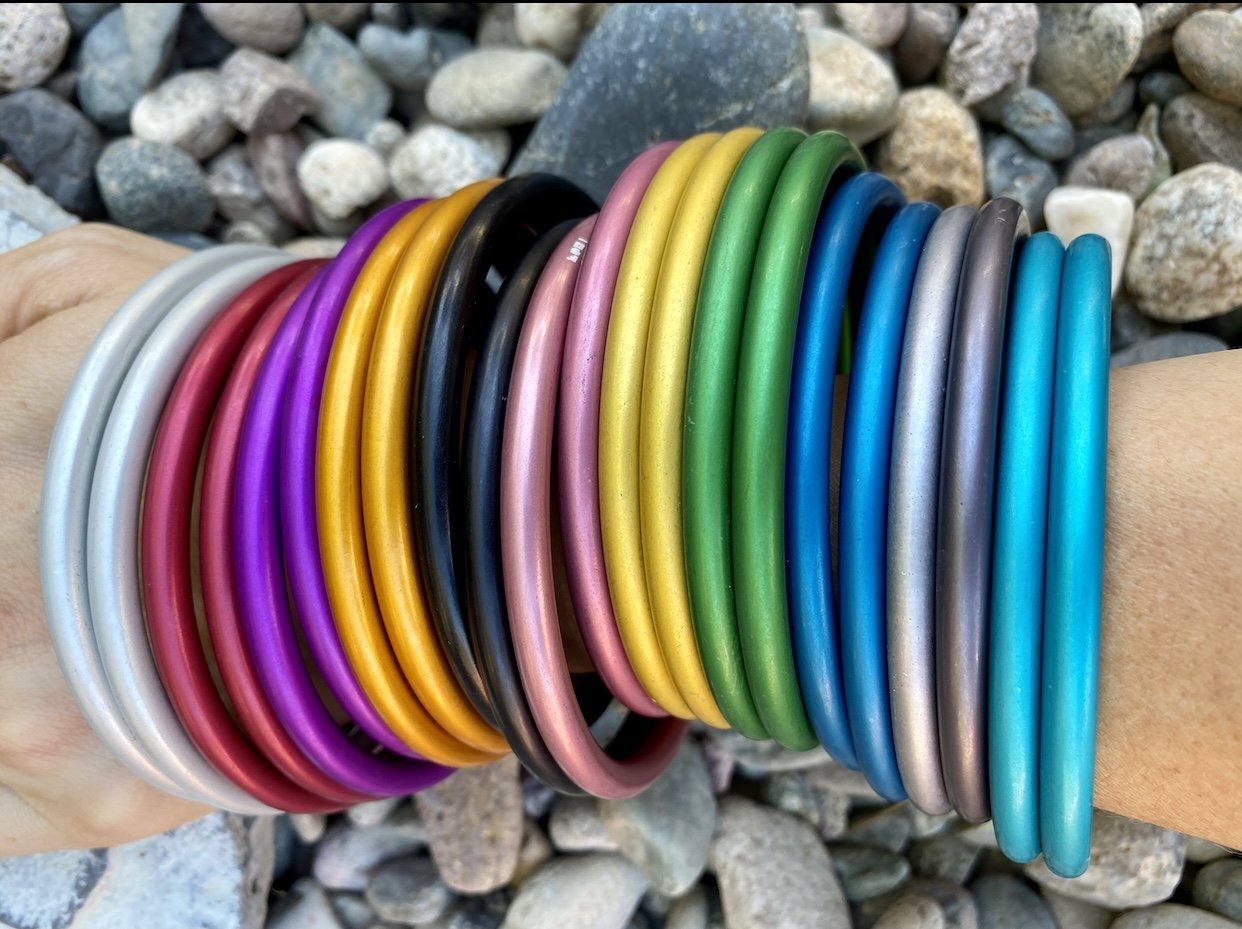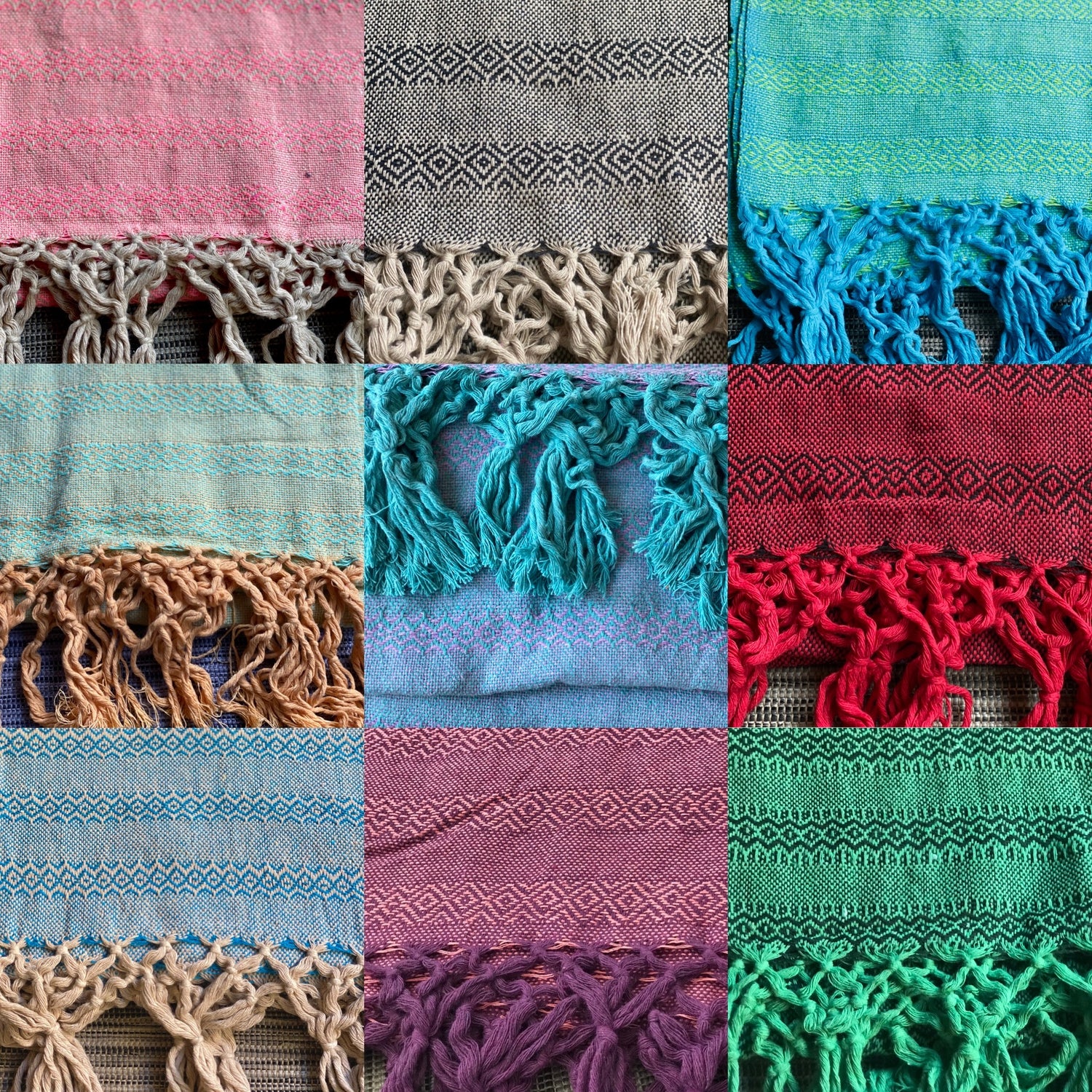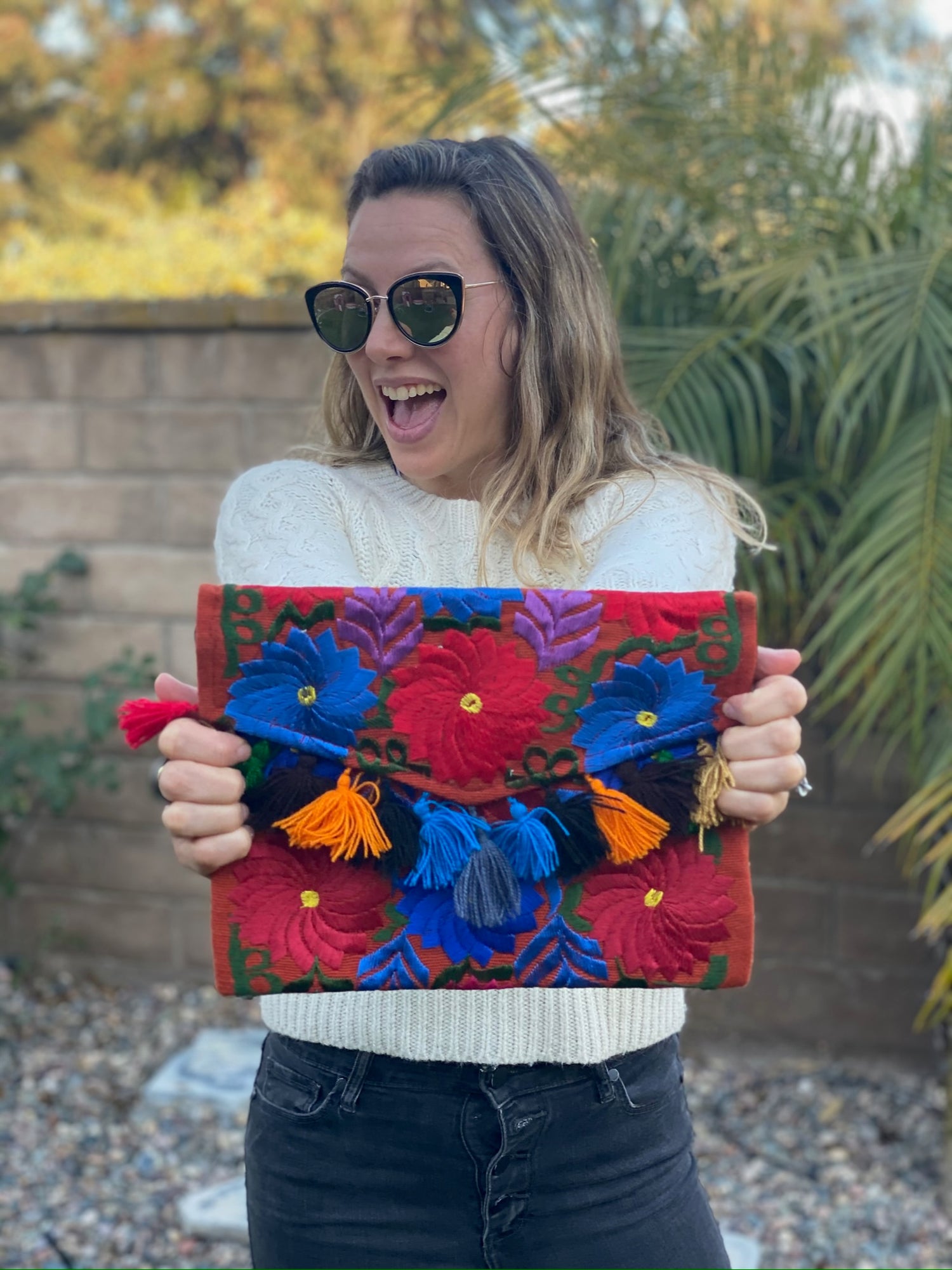Mexican rebozos are more than just beautiful shawls; they are rich with history and cultural significance. This versatile garment represents the vibrant traditions and heritage of Mexico, reflecting the artistry and skills of generations of craftsmen. Worn by women of all backgrounds, rebozos serve practical purposes while also making powerful cultural statements.

In this ultimate guide, you will explore the varied styles of rebozos, each telling a unique story through its colors and patterns. From the stunning designs woven in the Oaxacan mountains to the more modern interpretations seen in contemporary fashion, the rebozo stands as an enduring symbol of Mexican identity. You’ll discover how this cherished piece of clothing lives on, connecting the past with the present.
As you dive deeper into the world of rebozos, you will gain insight into their role in rituals, celebrations, and everyday life. Understanding their significance allows you to appreciate how these shawls embody resilience, creativity, and the spirit of Mexican culture.
History and Evolution of the Rebozo

The rebozo has a rich history that reflects various influences over centuries. Its journey starts from ancient Mesoamerica, moving through the Spanish colonial period, and into significant events like the Mexican Revolution. Today, the rebozo is recognized globally for its artistic and cultural value.
Pre-Colonial Origins and Mesoamerica
The origins of the rebozo date back to pre-colonial times in Mesoamerica. Indigenous women crafted these shawls using traditional techniques. Materials varied by region, including cotton and agave fibers. The rebozo served multiple purposes, such as providing warmth and protection from the sun.
In many indigenous cultures, this garment also symbolized identity and social status. Women wore rebozos during rituals, celebrations, and daily life, making it a functional and ceremonial piece. The designs often featured intricate patterns that told stories of the wearer’s community.
Influence of the Spanish Colonial Period
With the arrival of the Spanish in the 16th century, the rebozo began to evolve. Spanish influence introduced new materials and styles, like silk and wool. These changes enriched the original designs and expanded the rebozo's aesthetic appeal.
During this time, the rebozo became more than just a functional item. It started to serve as a fashion statement among colonial women. Blendings of indigenous and European styles led to a more diverse range of patterns and uses. Today, you can see remnants of this blend in contemporary rebozo designs.
The Rebozo in the Mexican Revolution and Independence
The rebozo played a crucial role during the Mexican Revolution and Independence. It became a symbol of resistance and identity for women actively participating in the struggle. Many women, including notable figures like Josefa Ortiz de Domínguez, wore rebozos to assert their presence.
During the Revolution, the rebozo was often used to carry items, including weapons and messages. It became an emblem of empowerment, showcasing women's vital contributions to Mexico's fight for freedom. The rebozo transcended its original purpose, serving as a visible reminder of resilience and strength in the face of challenges.
Modern Era and Global Recognition
In the modern era, the rebozo has gained international recognition. Craftsmen and women continue to create these shawls, preserving ancestral techniques while adapting to new trends. The global market has embraced the rebozo, making it a sought-after item for its beauty and cultural significance.
Various organizations work to promote the rebozo, celebrating its history and artistry. Today, it is worn not only for practical purposes but also in fashion shows and cultural events worldwide. The rebozo stands as a testament to Mexico's rich cultural heritage and continues to connect people across different cultures.
Cultural Significance and Symbolism

The rebozo holds deep meaning in Mexican culture, representing not just a garment but an essential part of identity and tradition. Its use goes beyond fashion, encompassing elements of spirituality and femininity. This section explores its symbolism in society, its role in rituals and ceremonies, and its impact on identity.
Symbolism in Mexican Society
In Mexican society, the rebozo is a powerful symbol of heritage and identity. It connects women to their roots and embodies cultural pride. The vibrant colors and intricate patterns often reflect the region's history and traditions.
The rebozo signifies femininity and strength. Women wear it as a reminder of their roles in family and community. It acts as a protective layer, offering physical comfort while also representing emotional and spiritual support.
Many consider the rebozo a link to ancestral heritage. Through its use, women pass down histories and stories, fostering a sense of belonging in contemporary society. Thus, the rebozo transcends mere clothing, becoming a vital part of cultural expression.
Rebozos in Rituals and Ceremonies
Rebozos play a significant role in various rituals and ceremonies. For instance, during weddings, they are used to symbolize the union of two families. The bride often wears a beautiful rebozo to honor her heritage while celebrating her new life.
In pregnancy and childbirth, rebozos are commonly used to support mothers. They wrap the mother for warmth and protection, reflecting the community's care for her well-being. This practice celebrates motherhood and the spiritual journey of bringing new life into the world.
On Mexican Independence Day, women proudly wear rebozos to honor national pride and cultural identity. This annual ritual strengthens their bond to heritage and showcases the deep-rooted traditions associated with this iconic garment.
Fashion, Identity, and Femininity
The rebozo is not only a traditional piece but also a statement of identity in contemporary fashion. Many Mexican women blend rebozos into modern outfits, showcasing cultural pride while embracing personal style.
This versatility is vital to how women express their femininity. Rebozos can be styled in numerous ways, allowing each wearer to reflect their unique personality. The way you drape a rebozo can transform its appearance and significance, making it a dynamic part of one’s outfit.
The rebozo also acts as a bridge between tradition and modernity. As women wear them in various settings, they redefine what it means to embody Mexican culture today. Embracing this garment allows you to celebrate both individuality and collective heritage.
Weaving Techniques and Materials

The world of Mexican rebozos is rich with unique techniques and materials. Each aspect of weaving contributes to the final product's beauty and significance. From traditional practices to regional nuances, understanding these elements deepens your appreciation of this art form.
Traditional Weaving Practices
You will find that traditional weaving practices in Mexico often involve the use of the backstrap loom. This method has been used for centuries. The weaver sits tensioned against the loom, which allows for close control over the process.
Skilled artisans create intricate patterns and designs using local techniques passed down through generations. Natural dyes play a vital role in this process. For instance, colors are derived from indigo and cochineal, which help produce vibrant and long-lasting hues.
Variations in Regional Techniques
As you explore different regions of Mexico, you will notice variations in weaving techniques. For example, in Oaxaca, artisans excel in the ikat technique. This method involves binding and dyeing threads before weaving, leading to unique, blurred designs.
In Tenancingo, the focus may be on more symmetrical patterns using a variety of colors. Different towns have their own specialties that reflect local culture and history. These variations add to the diversity of rebozo designs across the country.
Materials: Cotton, Silk, Wool, and More
When it comes to materials, you will encounter a range of fibers used in making rebozos. Cotton is the most common, appreciated for its softness and breathability. Silk adds a luxurious touch, often seen in higher-end pieces, while wool may be used for warmth in colder regions.
Artisans also experiment with combinations of these materials to achieve unique textures and looks. Each fiber contributes to the overall feel and appearance of the rebozo. Additionally, the use of natural dyes enhances the richness of colors and reflects the artisan's skill in using local resources effectively.
Designs and Styles Across Regions

Mexican rebozos showcase a rich variety of designs and styles that reflect the diverse cultures and histories of different regions. Each area's patterns and colors tell a unique story, influenced by indigenous traditions and modern trends.
The Diversity of Patterns and Colors
Rebozos exhibit an impressive range of patterns and colors. In Oaxaca, you will find intricate designs created using a backstrap loom. These often include vibrant hues and symbolic motifs that represent local wildlife and traditions.
In Chiapas, rebozos may feature bold geometric shapes and bright colors, often reflecting the lively spirit of the region.
Michoacán is noted for its floral patterns, intricately woven to showcase the area’s natural beauty.
Styles can vary significantly even within the same state, making every piece unique.
Influence of Indigenous Communities
Many rebozo designs are deeply rooted in the customs of indigenous communities. In towns like Tenancingo, weaving has been passed down through generations, preserving ancient techniques and patterns.
Each indigenous group brings its own culture and stories into their designs. For example, the styles from San Luis Potosí might include symbols that celebrate local myths.
In La Piedad, craftsmanship focuses on unique weaving methods that incorporate local history, while Uriangato emphasizes traditional colors and patterns reflecting everyday life.
Contemporary Designs and Fashion Trends
Modern designers are revitalizing the rebozo by merging traditional weaving techniques with contemporary fashion trends. Today, you see rebozos being worn not just for cultural celebrations but also in everyday outfits.
Stylists often experiment with color combinations, blending traditional patterns with modern aesthetics. These innovations attract younger audiences, making the rebozo a sought-after accessory.
You may also find collaborations between indigenous artisans and fashion brands that give traditional designs a fresh look, while still honoring their cultural significance. This evolution keeps the rebozo relevant in today’s fashion world.
Rebozos in Art and Museums

Rebozos play an important role in the artistic representation of Mexican culture, showcasing themes of identity and heritage. Their presence in museums and exhibits highlights not only their beauty but also their significance in fashion and craft.
Frida Kahlo and the Artistic Depiction of Rebozos
Frida Kahlo famously wore rebozos throughout her life, integrating them into her iconic style. Her paintings often feature these shawls, symbolizing her connection to Mexican heritage and cultural identity. The act of wearing a rebozo was an expression of pride for Kahlo.
In her artwork, the rebozo serves as a backdrop for themes of femininity, struggle, and resilience. The intricate embroidery and handwoven designs of these shawls add depth and narrative to her pieces. This artistic expression invites viewers to appreciate the craftsmanship and cultural significance of rebozos.
Exhibits and Collections Worldwide
Many museums around the world curate exhibits celebrating rebozos. These collections often showcase the craftsmanship behind these handwoven textiles, emphasizing their beauty and cultural importance. Museums like the Fashion and Textile Museum highlight the artistry involved in making rebozos, from the choice of materials to the techniques used.
Traveling exhibits also feature rebozos, often alongside other indigenous textiles. This provides a broader context of how these garments fit into the global narrative of fashion and artistry. You can discover the evolution of rebozos and their relevance in both historical and contemporary settings.
Preservation of Ancestral Knowledge
The preservation of ancestral knowledge related to rebozos is vital. Many artisans still practice traditional weaving techniques passed down through generations. This commitment to preserving craft not only honors heritage but also ensures that future generations can connect with their roots.
Workshops and community programs often focus on teaching these skills, enabling younger individuals to learn about the importance of rebozos. This ongoing connection keeps the rich cultural legacy alive. Museums play a role by documenting these practices and creating spaces for dialogue about the significance of rebozos in Mexican society.
Frequently Asked Questions

Understanding the rebozo involves exploring its traditional creation methods, regional variations, and cultural significance. You will learn how this garment is integrated into ceremonies and its historical evolution, as well as its role in modern fashion and child-rearing practices.
What traditional methods are used to create a Mexican rebozo?
Mexican rebozos are traditionally woven on a backstrap loom. This method requires skill and patience, as it can take weeks to complete a single piece. Artisans use fine cotton or wool threads, often dyed using natural colors to achieve vibrant patterns.
How do the styles and patterns of rebozos vary across different regions in Mexico?
Styles and patterns can greatly differ depending on the region. For example, rebozos from Oaxaca often feature intricate geometrical designs, while those from Tenancingo may use more floral motifs. Each area showcases its unique cultural identity through colors and weaving techniques.
In what ways is the rebozo integrated into Mexican ceremonies and celebrations?
The rebozo plays an important role in various ceremonies, such as weddings and quinceañeras. It is often worn as a symbol of elegance and tradition. During these events, the rebozo is used in rituals, blessings, and dances, highlighting its cultural importance.
Can you trace the evolution of the rebozo through Mexican history?
The rebozo dates back to pre-Hispanic times, evolving significantly throughout history. Initially used for practical purposes, it gradually became a symbol of identity and status. Over the centuries, changes in materials and designs reflected broader social and cultural shifts in Mexico.
How is the rebozo regarded within modern Mexican fashion and culture?
In today’s fashion, the rebozo is both a traditional garment and a modern accessory. Designers are incorporating it into contemporary outfits, making it relevant for new generations. This blend of tradition and modernity keeps the cultural significance of the rebozo alive.
What role does the rebozo play in the traditional practices of midwifery and child-rearing in Mexico?
Historically, the rebozo serves practical purposes in midwifery and child-rearing. It is used to swaddle infants, providing comfort and security. Additionally, midwives often use the rebozo during childbirth as a tool for support and to assist in various birthing practices.




